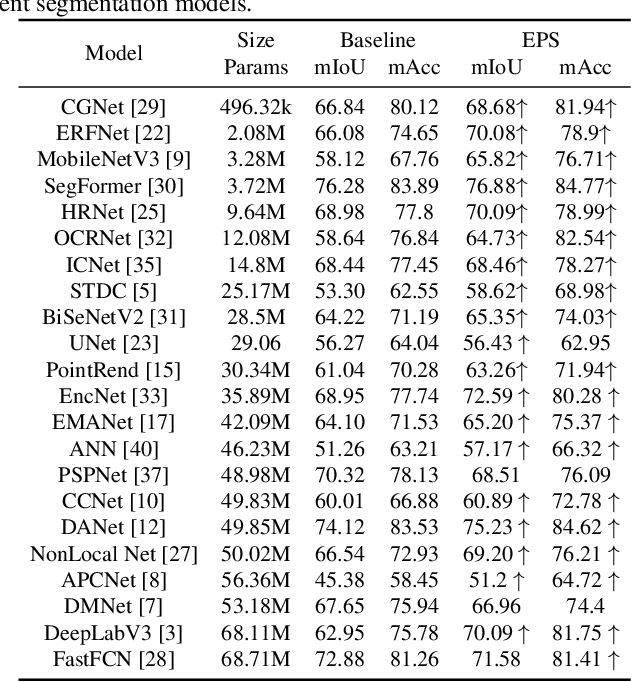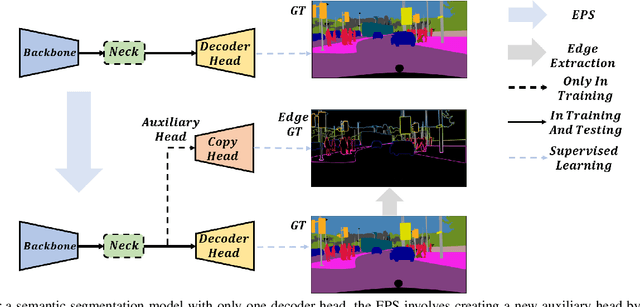Jianye Yi
Edge-aware Plug-and-play Scheme for Semantic Segmentation
Mar 18, 2023



Abstract:Semantic segmentation is a classic and fundamental computer vision problem dedicated to assigning each pixel with its corresponding class. Some recent methods introduce edge-based information for improving the segmentation performance. However these methods are specific and limited to certain network architectures, and they can not be transferred to other models or tasks. Therefore, we propose an abstract and universal edge supervision method called Edge-aware Plug-and-play Scheme (EPS), which can be easily and quickly applied to any semantic segmentation models. The core is edge-width/thickness preserving guided for semantic segmentation. The EPS first extracts the Edge Ground Truth (Edge GT) with a predefined edge thickness from the training data; and then for any network architecture, it directly copies the decoder head for the auxiliary task with the Edge GT supervision. To ensure the edge thickness preserving consistantly, we design a new boundarybased loss, called Polar Hausdorff (PH) Loss, for the auxiliary supervision. We verify the effectiveness of our EPS on the Cityscapes dataset using 22 models. The experimental results indicate that the proposed method can be seamlessly integrated into any state-of-the-art (SOTA) models with zero modification, resulting in promising enhancement of the segmentation performance.
Harmonizing Output Imbalance for semantic segmentation on extremely-imbalanced input data
Nov 10, 2022



Abstract:Semantic segmentation is a high level computer vision task that assigns a label for each pixel of an image. It is challengeful to deal with extremely-imbalanced data in which the ratio of target ixels to background pixels is lower than 1:1000. Such severe input imbalance leads to output imbalance for poor model training. This paper considers three issues for extremely-imbalanced data: inspired by the region based loss, an implicit measure for the output imbalance is proposed, and an adaptive algorithm is designed for guiding the output imbalance hyperparameter selection; then it is generalized to distribution based loss for dealing with output imbalance; and finally a compound loss with our adaptive hyperparameter selection alogorithm can keep the consistency of training and inference for harmonizing the output imbalance. With four popular deep architectures on our private dataset with three input imbalance scales and three public datasets, extensive experiments demonstrate the ompetitive/promising performance of the proposed method.
 Add to Chrome
Add to Chrome Add to Firefox
Add to Firefox Add to Edge
Add to Edge